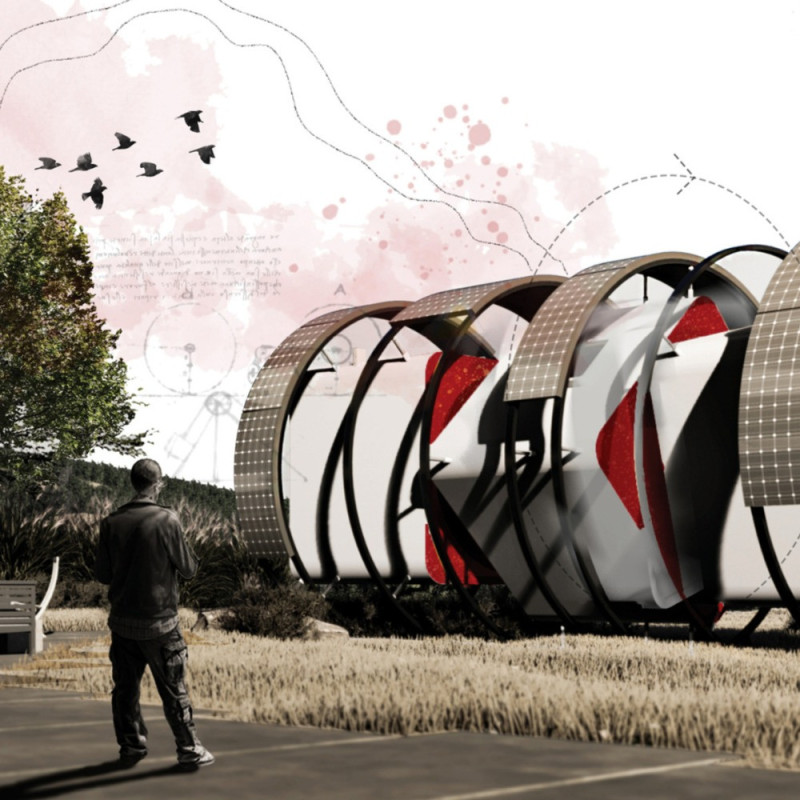5 key facts about this project
The House of Rotation is a modular design that emphasizes flexibility and efficiency in living spaces. Located in a modern urban setting, the design addresses the diverse needs of its occupants. The concept revolves around rotating blocks that allow for easy changes in function and use. It combines practical functionality with a focus on comfort, creating a versatile home.
Primary Structure
The house comprises two rotating blocks and a central pivot block. This arrangement enables users to adjust the space according to their needs throughout the day. The central services block, known as Block A, includes important functions like sewage and water collection tanks. Additionally, it serves as a cooking area and laundry space, combining essential services in one easily accessible location.
Contextual Functionality
Block B is designed for sleeping and relaxation. It has different modes to cater to occupant preferences. In the 0-degree position, it acts as a reading nook and area for small tasks. At 90 degrees, it transforms into a space for relaxation, while the 180-degree setting opens the area for larger gatherings. This adaptability accommodates both personal and social needs, highlighting the importance of varied living experiences in one home.
Living and Working Space
Block C serves as the main living and working area. It has distinct configurations for various functions. In its 0-degree orientation, it provides space for work, dining, and conversations. When rotated to 90 degrees, it offers a cozy living area, while at 180 degrees, it encourages open interactions. This design reflects the fluidity of modern lifestyles, where homes need to accommodate multiple activities throughout the day.
Sustainable Design Elements
The design incorporates several structural features to promote sustainability. It includes rotation rails that facilitate the movement of the blocks. A photovoltaic system harnesses solar energy for efficiency, while a rainwater collection system supports sustainable practices. These elements enhance the home's functionality while also encouraging responsible resource management.
The House of Rotation exemplifies how spatial design can adapt to the changing needs of its inhabitants. Each configuration offers a distinct experience, creating a living environment that responds to the everyday lives of its users.



















































